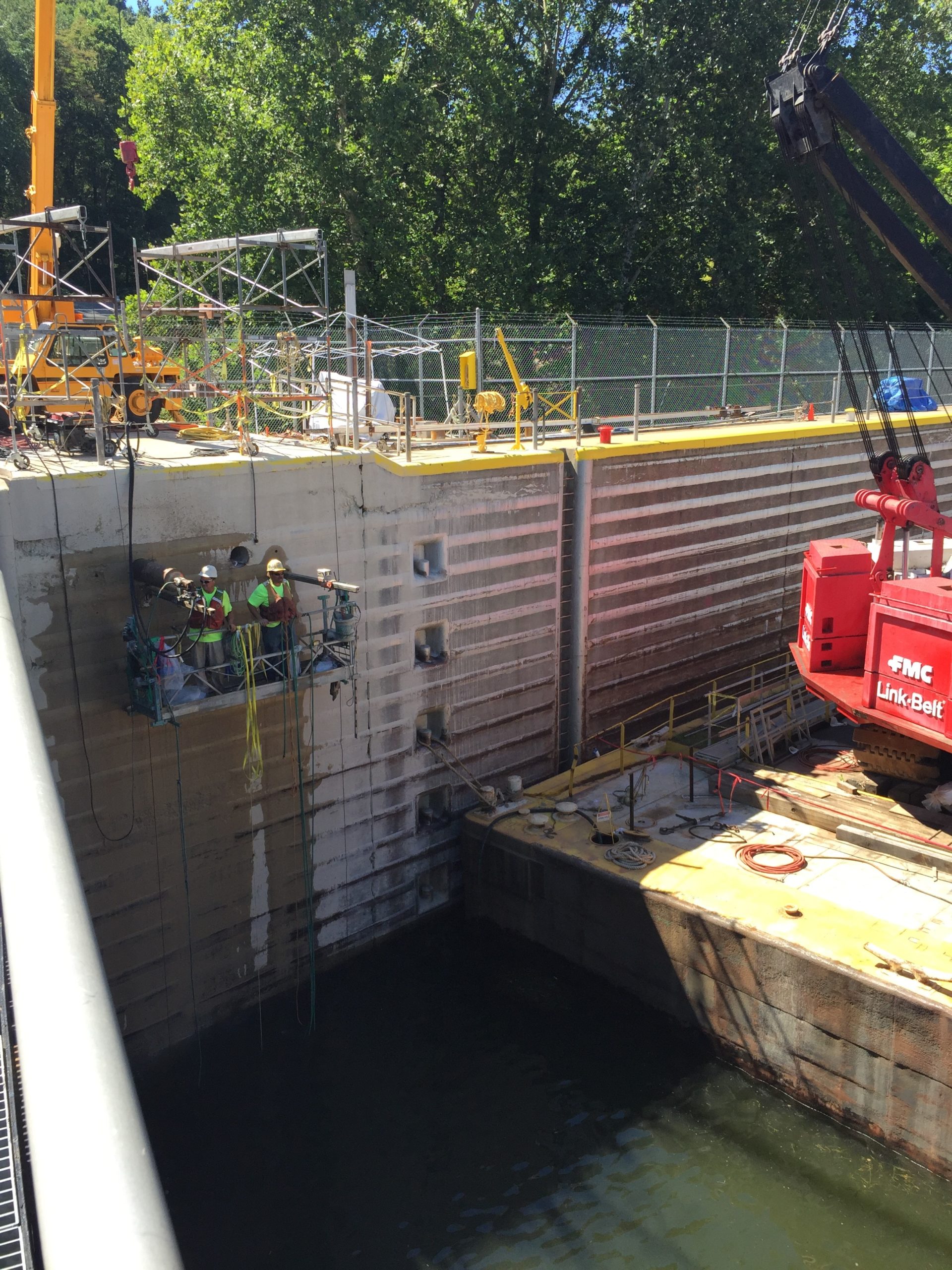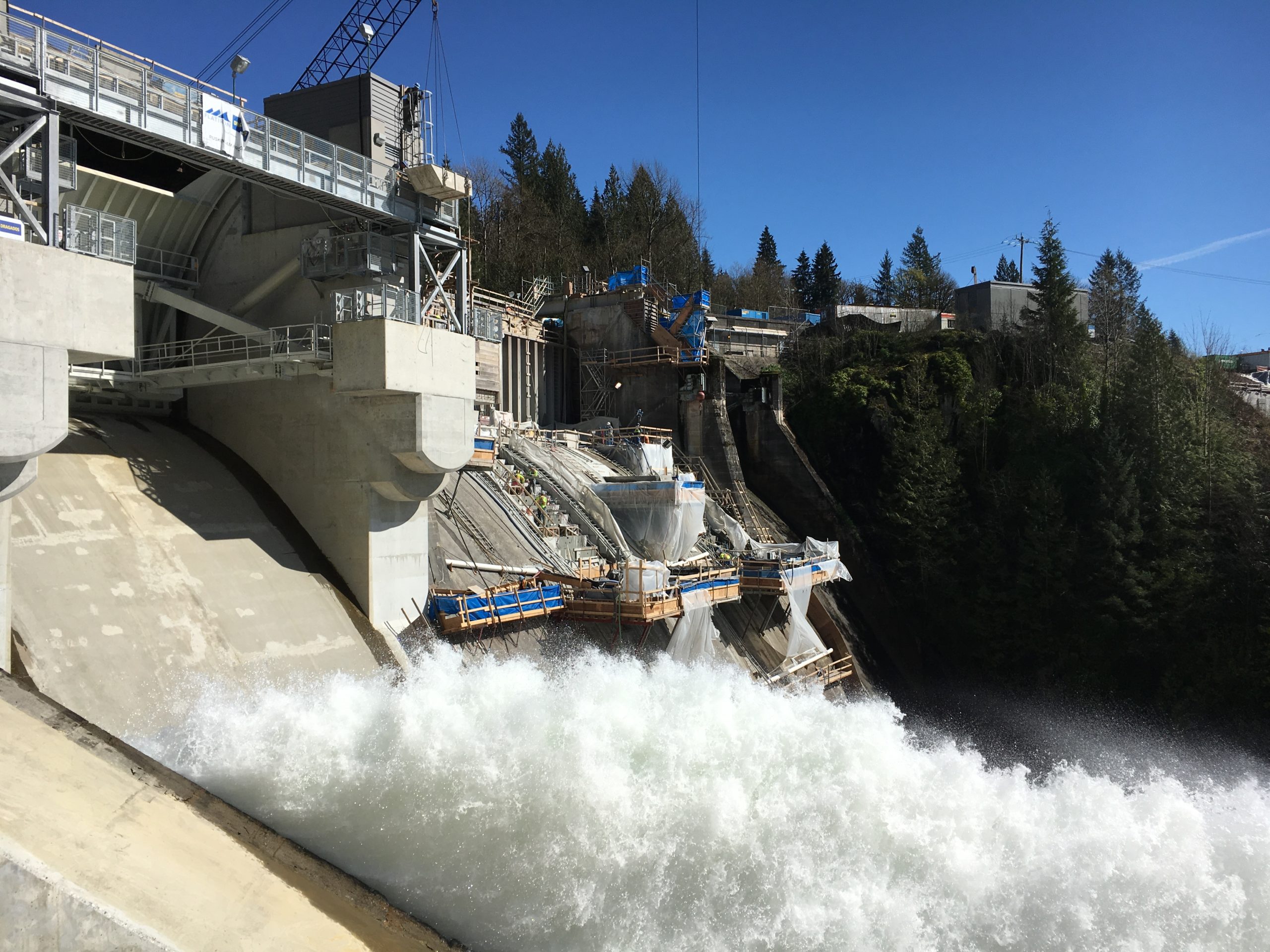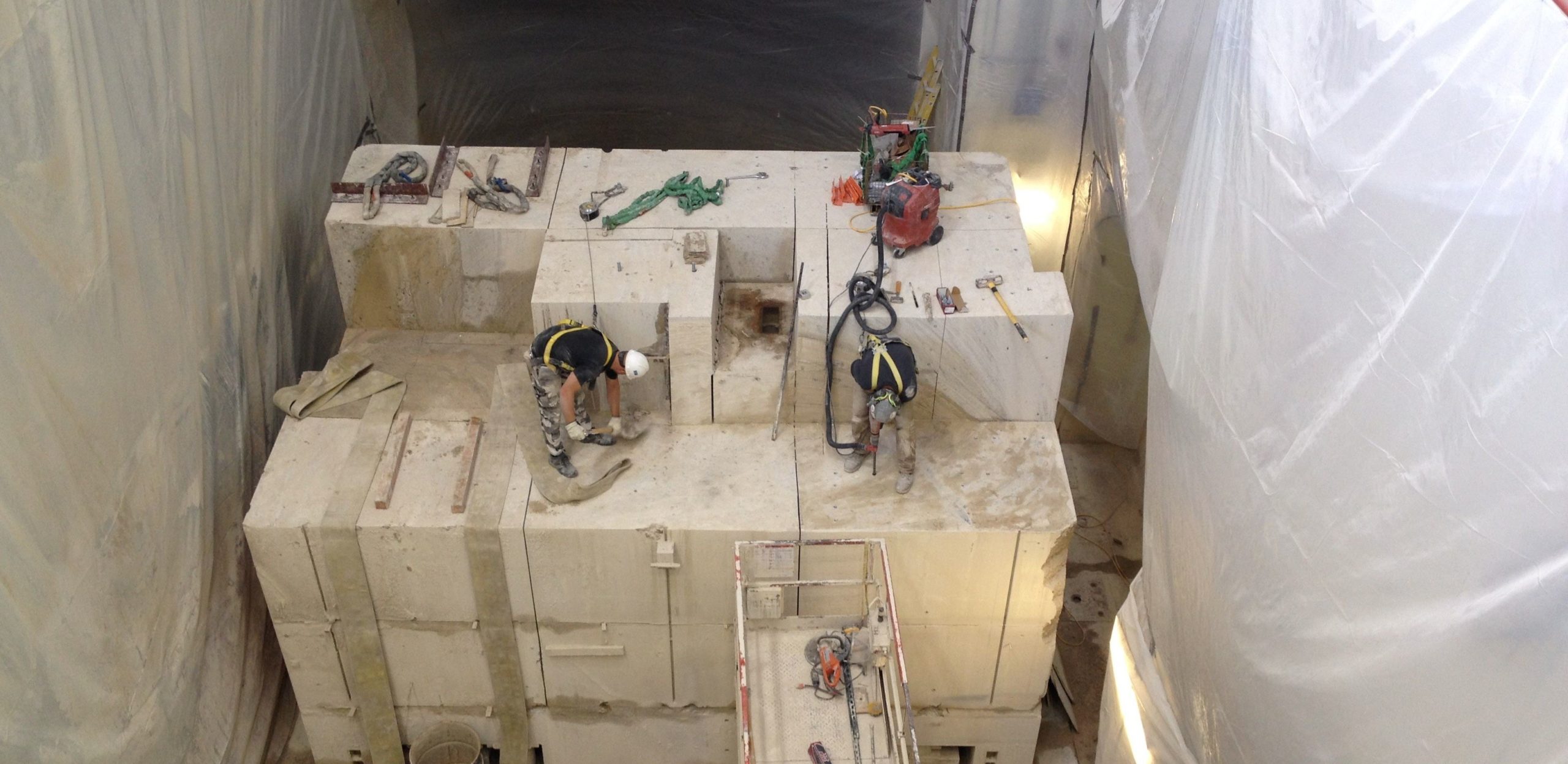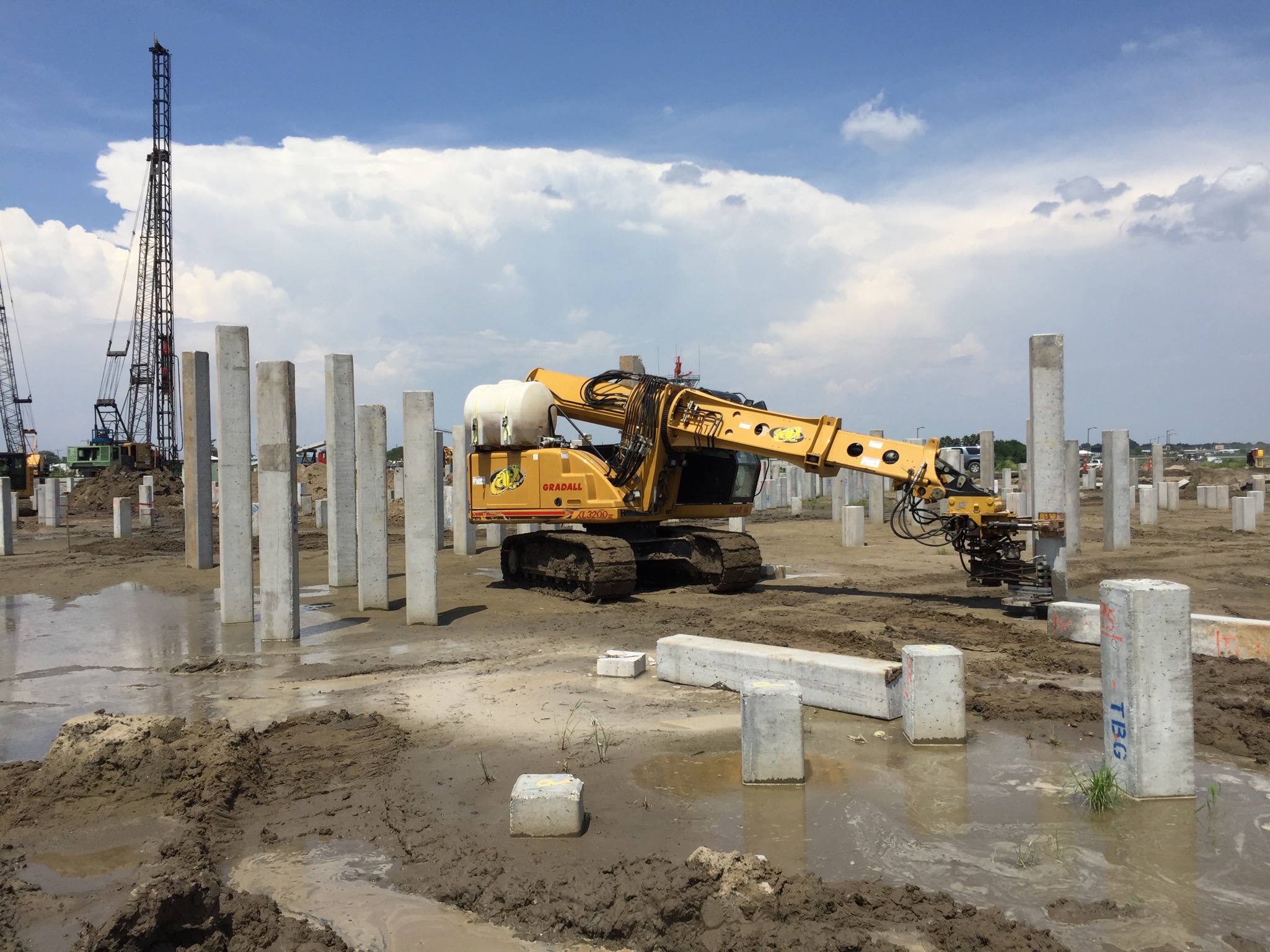
CSDA Contractor Rescues the Montgomery Locks and Dam


Extracting cut pieces via the “fork lift” attachment provided by the US Army Corps of Engineers.
Montgomery Locks and Dam is located on the Ohio River five miles downriver from Beaver, Pennsylvania and three miles upriver from the first large-scale nuclear power plant in the U.S. at Shippingport, Pennsylvania. Construction began in 1932 and the dam opened in June 1936 to permit increased control over the water level in the navigation pool upriver of the dam. Montgomery replaced the old-style wooden wicket dams built by the Pittsburgh District of the U.S. Army Corps of Engineers to raise the first shallow navigational pool on this stretch of the Ohio River.
Montgomery is busy, with 300 commercial lockages each month and 150 lockages of pleasure craft during the busy summer months. It is located downstream from a large industrial base and requires periodic maintenance to keep the locks and dam fully operational. The most recent project was to provide a new maintenance bulkhead recess. Commercial waterway traffic takes priority and limits the amount of lock chamber time allowed for any upgrades.
CSDA member Matcon Diamond, Inc. of Pittsburgh had successfully completed two prior projects with the local branch of the Corps of Engineers along the waterway around Pittsburgh. They were a natural choice for the new maintenance bulkhead project. All of the work was completely dependent on access to the faces of the chamber walls and per regulations, no work could take place within the chamber during times of active boat traffic.
In order to meet this challenge, planning was the key for Matcon. All materials and equipment needed, along with backups, were staged and ready to be implemented at a moment’s notice so productivity could be maximized during the allowable chamber closures.
The overall project scope consisted of wire sawing and core drilling concrete to accommodate embedded items for the new maintenance closure system in the upstream and downstream approaches to the 110-foot by 600-foot primary land lock chamber. The wire sawing was conducted from the top of the land and middle wall monoliths to the underwater poiree dam and boule dam sills at the elevations indicated. The bulkhead recess dimensions were approximately nine feet long by four feet deep by 44 feet tall at the downstream locations and nine feet long by four feet deep by 27 feet tall at the upstream locations.
Core drilling, wire sawing, line drilling and other precision cutting methods were utilized for the concrete cutting. Steel corner protection and wall armor were also to be cut at locations for the proposed concrete wire saw. Matcon was to cut the concrete free and install a temporary Corps-supplied stability system. The Corps removed the concrete sections at a later date.

Matcon crew working from a swing scaffold.
Due to the age and nature of the structure, the lock and dam could not sustain any percussive demolition activities whatsoever. Diamond cutting was the only permissible method approved by the Corps. Surveyors mobilized to establish precise locations of the future recesses. The next step was to drill vertical 9 inch diameter holes at the back corners of the recesses, from the top of the lock walls down to the sill elevations. These holes were to provide access for plunge pulleys for wire sawing operations utilizing the Husqvarna 2512 hydraulic magazine wire saw and Diamond Products diamond wire. Simultaneously, four inch diameter vertical holes were cored with a Longyear hydraulic core drill and K2 Diamond core bits down to the sill elevation for a future stabilization system.
On the faces of the lock walls, Matcon drilled a series of 12 inch diameter holes and 1.5 inch diameter holes horizontally to the depth of the recess (approximately four feet). The 12 inch holes were mandated by the contract for future removal of the blocks by the Corps, and were located along each horizontal cut line, spaced to accept the Corps’ lifting apparatus. The 1.5 inch diameter holes were located at the intersection of each horizontal cut line and the vertical cut lines to provide access for future diamond wire sawing operation. Once all of these holes were completed, the wire sawing operations began. The first sawed cut was the bottom horizontal cut.
Once it was established, the back vertical section was then cut. Then each subsequent horizontal cut was done, working from the sills to the uppermost cut line above the surface. The final cuts were the two vertical side cuts. These were completed only after a stabilization system was placed, ensuring the blocks would not be able to shift until their removal.
Additionally, due to its age, isolated areas of the walls exhibited pockets of deteriorated concrete. This presented some difficulty during the vertical drilling operations, as the cores would free up and jam in the bits. Only through the operator’s great experience were they able to work through the challenge of this hang up. The deteriorated areas were also pointed out to and logged by the Corps, and will be addressed in a future project.

Cut slab showing striations from the diamond wire.
Underwater cutting was another challenge, and Matcon subcontracted with a certified diving company for all underwater work. As the prime contractor, Matcon also retained a certified surveying subcontractor and a professional photographer as required by the Corps job specification.
This 3,360 square feet wire sawing project was completed ahead of schedule and well within budget. The Corps was very pleased with the work. This is the third project of this sort that Matcon has completed with the local branch of the Corps of Engineers on the waterway around Pittsburgh. At this time, no future work of this sort is planned on the locks and dam system in this area.
“We were very satisfied with the work. This was the third project of this type we had completed for the Corps in the past few years. It was a great opportunity to have our most seasoned drilling and sawing employees to show their talents and train the next generation of cutters.” proudly stated Matcon manager Dan Matesic.
Company Profile
Matcon Diamond is headquartered in Pittsburgh, Pennsylvania. They have been in business and a CSDA member since 1985. Their fleet consists of approximately 50 trucks. Matcon is a full service contractor for diamond sawing drilling and removal. They also specialize in concrete rehabilitation, including concrete placement and joint sawing and sealing.
RESOURCES
General Contractor
U.S. Army Corps of Engineers
Pittsburgh, PA
www.lrp.usace.army.mil/
CSDA Cutting Contractor
Matcon Diamond
Pittsburgh, PA
Dan Matesic
Tel: 412-481-0280
Email: matcon@matcondiamond.com
www.matcondiamond.com
Methods Used
Wire sawing and core drilling














